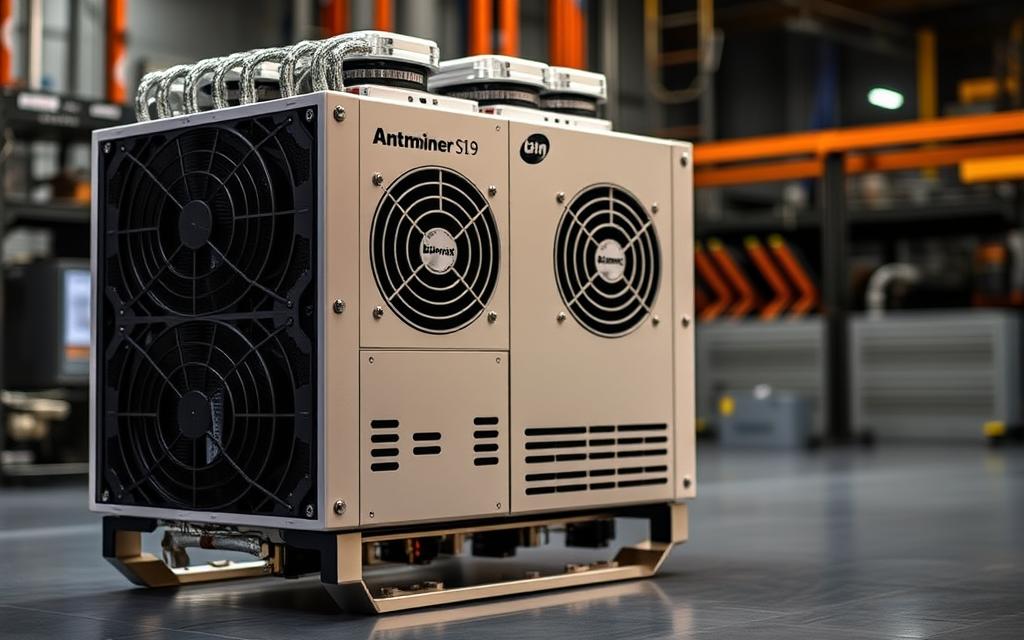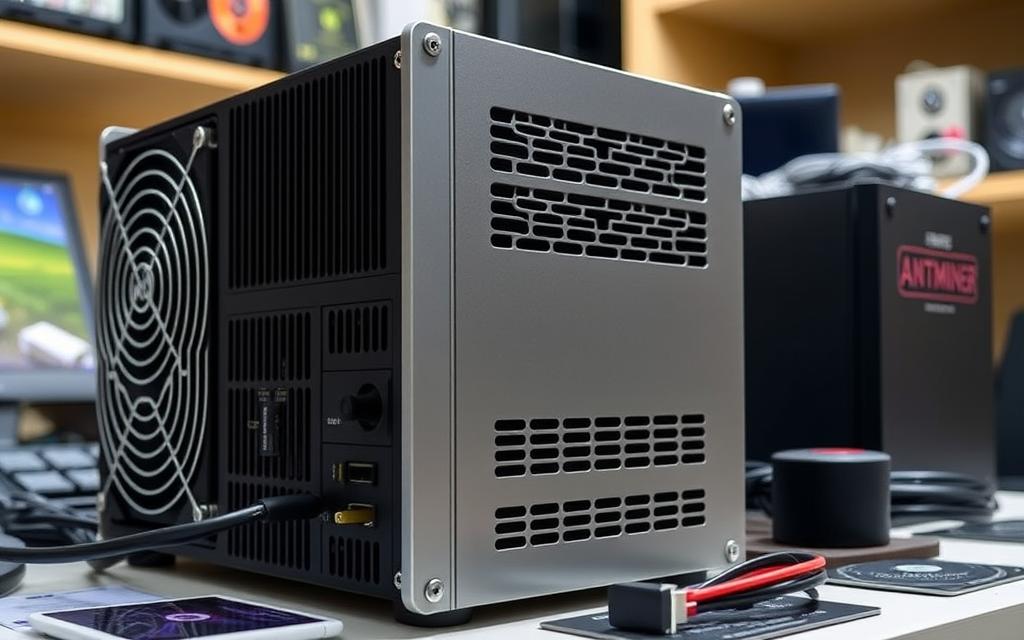Table of Contents
The process of bitcoin mining is complex, involving the validation of transactions and the addition of new blocks to the blockchain through solving intricate mathematical problems.
The amount of bitcoin that can be mined daily is influenced by several factors, including the hashing power of mining hardware, network difficulty, and energy efficiency.
Understanding the daily mining potential requires knowledge of the current block reward and the hash rate of your mining setup relative to the total network hash rate. For most individual miners, daily yields are measured in fractions of bitcoins rather than whole coins.
This article will break down the factors affecting daily mine bitcoin yields and provide realistic expectations for different mining setups.
Understanding Bitcoin Mining Fundamentals
To understand how much Bitcoin you can mine in a day, it’s essential to grasp the basics of Bitcoin mining. This process is crucial for the validation of transactions on the Bitcoin network and the creation of new Bitcoins.
What is Bitcoin Mining?
Bitcoin mining involves using powerful computers to solve complex mathematical equations, thereby securing the Bitcoin network and verifying transactions. This process is undertaken by miners who compete to solve these equations, with the first to succeed earning the right to add a new block of transactions to the Bitcoin blockchain.
The Block Reward System
The block reward system is a critical component of Bitcoin mining, serving as the primary incentive for miners to contribute their computing power. Currently, the reward stands at 6.25 Bitcoins per block, but it undergoes a “Bitcoin halving” event approximately every four years, reducing the reward by 50%. The next Bitcoin halving is expected to occur in 2024, reducing the block reward to 3.125 Bitcoins.
- The block reward system ensures a predictable issuance rate of new Bitcoins.
- Miners also earn transaction fees, which will become increasingly important as block rewards diminish.
Key Factors That Determine How Much Bitcoin Can You Mine in a Day
Several factors come into play when determining how much Bitcoin you can mine daily. The interplay between these factors ultimately affects your mining yield.
Mining Hardware and Hash Rate
The type and quality of your mining hardware directly impact your hash rate, a critical factor in determining mining success. High-performance mining rigs like the Bitmain Antminer S19 offer superior hash rates.

Energy Consumption and Efficiency
Energy consumption is a significant cost factor in Bitcoin mining. Miners must balance energy costs with the efficiency of their mining equipment to maximize profitability. Efficient mining rigs can significantly reduce overall energy expenditure.
Network Difficulty
The Bitcoin network adjusts its mining difficulty approximately every two weeks to maintain a consistent block production rate. As more miners join or upgrade their equipment, the hash rate increases, and so does the difficulty.
- Bitcoin’s network difficulty automatically adjusts approximately every 2,016 blocks to maintain a consistent block production rate.
- When more miners join the network or existing miners upgrade their equipment, the difficulty increases.
- Daily mining yields are inversely proportional to network difficulty.
The Reality of Daily Bitcoin Mining Yields
Assessing daily Bitcoin mining yields requires a thorough understanding of various factors that influence mining profitability. The yield is not just dependent on the hash rate of the mining hardware but also on the overall network difficulty and the Bitcoin price.
Average Mining Rates for Different Setups
Mining setups vary significantly in their hash rates, ranging from a few terahashes per second (TH/s) for smaller operations to exahashes per second (EH/s) for large-scale industrial mining. For instance, a miner with a hash rate of 100 TH/s in a network with a total hash rate of 150 EH/s would have a very small fraction of the total hash power.
Calculating Your Potential Daily Yield
To calculate the daily yield, miners can use the formula: (Your Hash Rate ÷ Network Hash Rate) × Block Reward × Blocks Per Day. For example, with a hash rate of 100 TH/s and a network hash rate of 400 EH/s, the daily yield would be approximately 0.0002 BTC per day, given the current block reward and number of blocks mined daily.
| Hash Rate (TH/s) | Network Hash Rate (EH/s) | Daily Yield (BTC) |
|---|---|---|
| 100 | 150 | 0.00015 |
| 100 | 400 | 0.0002 |

Solo Mining vs. Pool Mining: Impact on Daily Returns
The decision to engage in solo mining or pool mining is crucial for Bitcoin miners, influencing their daily earnings. Both methods have distinct advantages and disadvantages that impact daily returns.
Solo Mining Expectations
Solo mining involves miners working independently to solve complex mathematical equations to validate transactions and mine Bitcoins. This approach can be lucrative if a miner has significant hash power, but it comes with high risks and uncertainties.
Key considerations for solo mining include:
- High hash power requirements to compete with large mining farms.
- Unpredictable earnings, as finding a block can take a long time.
- No shared risks or rewards with other miners.
Pool Mining Advantages for Daily Yields
Pool mining, on the other hand, combines the hash power of multiple miners to increase the collective chance of finding blocks, with rewards distributed proportionally based on each miner’s contribution.
The primary benefits of pool mining include:
- Consistent daily returns, allowing miners to receive smaller but regular payments.
- Lower risks, as the combined hash rate boosts the chances of mining blocks.
- A popular choice for individual miners with limited hash rate powers.
For most miners today, pool mining provides more predictable earnings, making it a preferred option for those seeking stable daily yields.
Mining Hardware Comparison for Daily Bitcoin Production
Different mining hardware configurations can lead to substantial variations in daily Bitcoin production. The choice of hardware affects not only the hash rate but also the power consumption, which are critical factors in determining mining profitability.
Entry-Level ASIC Miners

Entry-level ASIC miners, such as the Antminer S9, offer a balance between cost and performance. They are considered affordable bitcoin mining hardware with hash rates around 14 TH/s. However, their efficiency is lower compared to higher-end models, affecting daily Bitcoin production.
Mid-Range Mining Equipment
Mid-range mining equipment like the Whatsminer M30S provides a higher hash rate (around 90 TH/s) and better efficiency. These miners are popular among small-scale mining operations due to their balance between power consumption and hash rate.
Industrial-Grade Mining Rigs
Industrial-grade mining rigs, such as the Antminer S19 XP, represent the pinnacle of bitcoin mining technology. They offer hash rates of 140 TH/s with superior efficiency ratios below 30 J/TH, significantly enhancing daily Bitcoin production for large-scale miners.
Energy Costs vs. Mining Earnings: The Profitability Equation
The profitability of bitcoin mining is heavily influenced by the balance between energy costs and mining earnings. As high-performance ASICs consume large amounts of power, energy expenses become a critical factor in determining the profitability of mining operations.
Calculating Your Break-Even Point
To remain profitable, miners must calculate their break-even point, considering factors such as energy costs, bitcoin mining difficulty, and hardware efficiency. Mining efficiency is often measured in joules per terahash (J/TH), with lower values indicating better efficiency.
Regional Energy Cost Considerations
Fees associated with energy consumption vary significantly by region, impacting the profitability of mining. Miners in areas with low-cost energy sources, such as hydroelectric power, have a distinct advantage. A comparison of regional energy costs is essential for understanding the potential profitability of mining operations.
| Region | Energy Cost ($/kWh) | Mining Profitability |
|---|---|---|
| Washington State | 0.02 | High |
| Quebec | 0.03 | High |
| Iceland | 0.04 | Medium |
Bitcoin Mining Difficulty and Its Impact on Daily Mining
Understanding the impact of mining difficulty on daily bitcoin yields is essential for miners. The difficulty of mining bitcoin is a crucial factor that affects how much miners can mine daily. As more miners join the network, the difficulty increases to maintain a balanced block mining rate — approximately every 10 minutes.
How Difficulty Adjustments Work
The bitcoin network adjusts the mining difficulty every 2016 blocks, or roughly every two weeks. This adjustment mechanism ensures that the block production rate remains stable despite changes in the network’s total hash rate. As the number of miners and the overall hash power increase, the difficulty level rises to slow down the rate at which new blocks are added to the blockchain.
Historical Difficulty Trends and Future Projections
Historically, mining difficulty has shown an exponential increase since the inception of bitcoin. It has risen from 1 in 2009 to over 67 trillion in 2023. This trend is expected to continue as more miners join and mining technology advances. Future projections suggest that the difficulty will keep increasing, further reducing daily yields for miners with static hash power unless they continually reinvest in more efficient equipment.

The long-term trend of increasing difficulty means that miners must adapt by upgrading their equipment to maintain consistent daily bitcoin production. Understanding these dynamics is crucial for miners to make informed decisions about their operations.
Optimizing Your Setup to Maximize Daily Bitcoin Mining
Daily Bitcoin mining yields can be substantially improved by optimizing your mining setup. Miners often join mining pools to combine their hash power and receive a portion of the bitcoin mined, providing a more steady and predictable income.
Hardware Optimization Strategies
Advanced miners implement custom firmware that can increase hash rates by 5-15% compared to stock settings while maintaining reasonable power consumption. Implementing monitoring systems with automatic alerts for hash rate drops or temperature increases allows for quick intervention to minimize downtime.
Mining Software Considerations
Selecting the right mining software can significantly impact daily yields by optimizing communication with mining pools and maximizing hash rate efficiency. Popular options include CGMiner, BFGMiner, and Awesome Miner.
Using pool-hopping algorithms can automatically switch between mining pools based on their current profitability, potentially increasing daily yields by 2-5%.
Common Misconceptions About Bitcoin Mining Rates
Bitcoin mining is often shrouded in misconceptions, particularly regarding daily mining yields. Many individuals entering the world of cryptocurrency mining are often misled by unrealistic expectations about how much Bitcoin they can mine in a day.
The “Mining One Bitcoin Per Day” Myth
The idea that an individual can mine one Bitcoin per day is a myth that has been perpetuated by a lack of understanding of the complexities involved in Bitcoin mining. In reality, with the current network difficulty and the vast amount of computational power required, mining one Bitcoin per day is not feasible for individual miners using standard equipment.
For instance, if a miner’s hardware has a hash rate of 100 TH/s and the total network hash rate is 150 EH/s, the miner would have approximately 1/1,500,000 of the network’s total hash power. This means that, statistically, the miner would mine one block approximately every 1,500,000 blocks, or about 28.5 years, yielding roughly 0.219 Bitcoin per year.
Understanding Realistic Timeframes
Realistic timeframes for Bitcoin mining must account for the current network difficulty and the miner’s hash rate relative to the total network hash rate. With a high-end ASIC miner producing 100 TH/s in today’s network (approximately 400 EH/s total), it would take on average about 7-10 years to mine one full Bitcoin.
| Miner Hash Rate | Network Hash Rate | Time to Mine 1 BTC |
|---|---|---|
| 100 TH/s | 150 EH/s | 28.5 years |
| 100 TH/s | 400 EH/s | 7-10 years |
Most individual miners measure their progress in terms of daily or monthly yields, typically in the range of 0.0003-0.001 BTC per day per modern ASIC. Understanding these realistic timeframes is essential for proper financial planning and calculating the true return on investment for mining operations.

Conclusion: Is Daily Bitcoin Mining Worth It in 2023?
As we navigate the complexities of Bitcoin mining in 2023, it’s essential to assess whether daily mining is a viable venture. The profitability of daily mining depends on a complex interplay of factors, including hardware efficiency, electricity costs, network difficulty, and Bitcoin price.
For miners with access to low-cost electricity and modern ASIC hardware, Bitcoin mining can still provide positive returns. However, the increasing institutionalization of mining has made it more challenging for individual miners. Joining reputable mining pools can make daily mining viable for smaller operations.
With only about 2 million Bitcoins left to be mined and one block created every 10 minutes, the long-term scarcity of Bitcoin continues to provide incentive for miners. As the Bitcoin supply dwindles, it may long take mine to be profitable, but with the right resources and technical knowledge, it remains a unique opportunity.
FAQ
What is the average daily yield for a Bitcoin miner?
The average daily yield for a Bitcoin miner depends on several factors, including the miner’s hash rate, energy consumption, and the current network difficulty. On average, a miner with a hash rate of 100 TH/s can mine approximately 0.0006 BTC per day, assuming an electricity cost of
FAQ
What is the average daily yield for a Bitcoin miner?
The average daily yield for a Bitcoin miner depends on several factors, including the miner’s hash rate, energy consumption, and the current network difficulty. On average, a miner with a hash rate of 100 TH/s can mine approximately 0.0006 BTC per day, assuming an electricity cost of $0.05 per kWh.
How does the block reward system impact daily mining yields?
The block reward system directly affects daily mining yields. Currently, the block reward is 6.25 BTC per block. As the block reward halves approximately every four years, the daily mining yield will decrease unless the price of Bitcoin increases or the network difficulty decreases.
What is the difference between solo mining and pool mining?
Solo mining involves mining alone, relying on the miner’s own hash power to find blocks. Pool mining, on the other hand, involves joining a group of miners who combine their hash power to increase their chances of finding blocks and share the rewards. Pool mining provides a more consistent daily yield, while solo mining can result in more significant variability.
How does network difficulty impact daily Bitcoin mining?
Network difficulty is a measure of how hard it is to find a new block. As the network difficulty increases, it becomes more challenging to mine Bitcoin, resulting in lower daily yields. The network difficulty adjusts every 2016 blocks, or approximately every two weeks, based on the total hash power of the network.
What are the most significant factors affecting mining profitability?
The most significant factors affecting mining profitability are the price of Bitcoin, energy costs, and the miner’s hash rate and efficiency. Miners must balance these factors to maximize their daily yields and maintain profitability.
Can I mine one Bitcoin per day with a single mining rig?
No, it is highly unlikely to mine one Bitcoin per day with a single mining rig. The current network difficulty and block reward make it challenging for individual miners to achieve such high daily yields. Most miners join pools to increase their chances of finding blocks and earning rewards.
How do energy costs impact mining profitability?
Energy costs are a significant expense for miners. High energy costs can reduce mining profitability, while low energy costs can increase it. Miners often seek locations with low energy costs to maximize their profitability.
What is the role of mining hardware in determining daily yields?
Mining hardware plays a crucial role in determining daily yields. More efficient and powerful mining hardware can increase a miner’s hash rate, resulting in higher daily yields. However, the cost of the hardware and its energy consumption must also be considered.
.05 per kWh.
How does the block reward system impact daily mining yields?
The block reward system directly affects daily mining yields. Currently, the block reward is 6.25 BTC per block. As the block reward halves approximately every four years, the daily mining yield will decrease unless the price of Bitcoin increases or the network difficulty decreases.
What is the difference between solo mining and pool mining?
Solo mining involves mining alone, relying on the miner’s own hash power to find blocks. Pool mining, on the other hand, involves joining a group of miners who combine their hash power to increase their chances of finding blocks and share the rewards. Pool mining provides a more consistent daily yield, while solo mining can result in more significant variability.
How does network difficulty impact daily Bitcoin mining?
Network difficulty is a measure of how hard it is to find a new block. As the network difficulty increases, it becomes more challenging to mine Bitcoin, resulting in lower daily yields. The network difficulty adjusts every 2016 blocks, or approximately every two weeks, based on the total hash power of the network.
What are the most significant factors affecting mining profitability?
The most significant factors affecting mining profitability are the price of Bitcoin, energy costs, and the miner’s hash rate and efficiency. Miners must balance these factors to maximize their daily yields and maintain profitability.
Can I mine one Bitcoin per day with a single mining rig?
No, it is highly unlikely to mine one Bitcoin per day with a single mining rig. The current network difficulty and block reward make it challenging for individual miners to achieve such high daily yields. Most miners join pools to increase their chances of finding blocks and earning rewards.
How do energy costs impact mining profitability?
Energy costs are a significant expense for miners. High energy costs can reduce mining profitability, while low energy costs can increase it. Miners often seek locations with low energy costs to maximize their profitability.
What is the role of mining hardware in determining daily yields?
Mining hardware plays a crucial role in determining daily yields. More efficient and powerful mining hardware can increase a miner’s hash rate, resulting in higher daily yields. However, the cost of the hardware and its energy consumption must also be considered.









